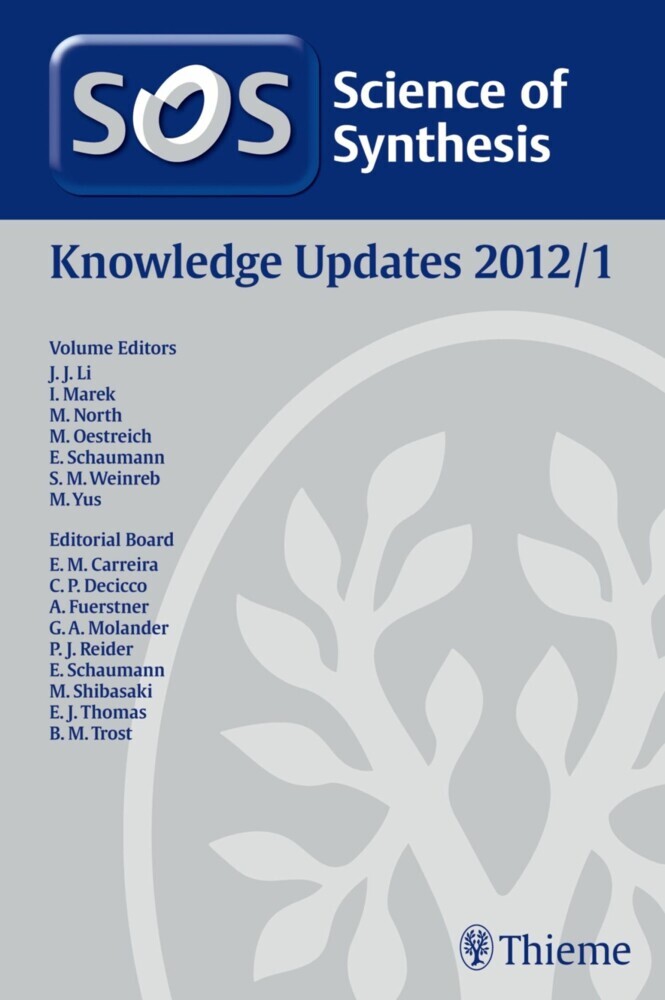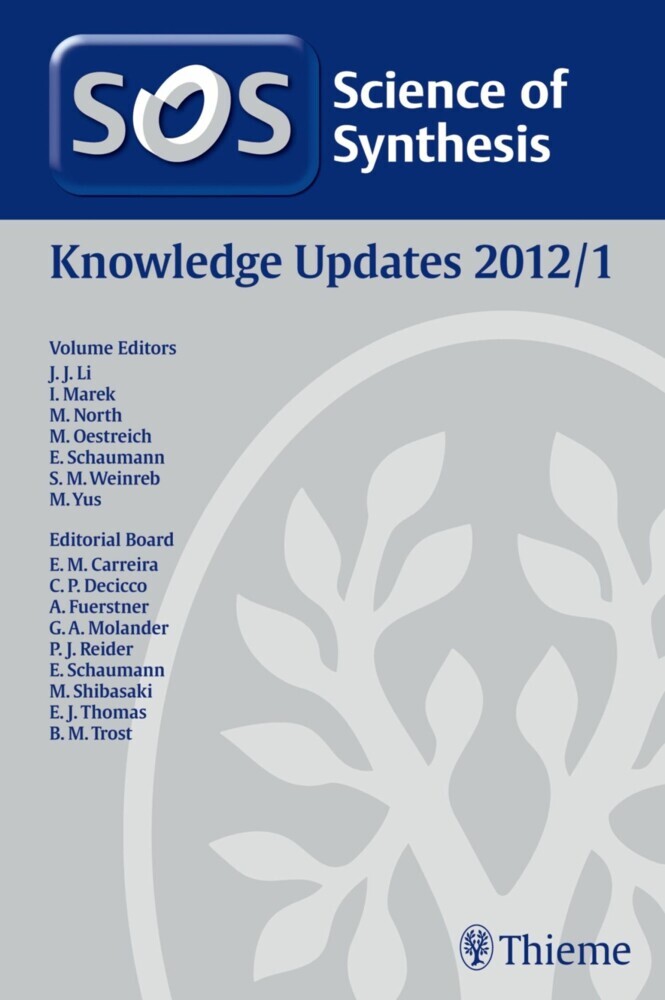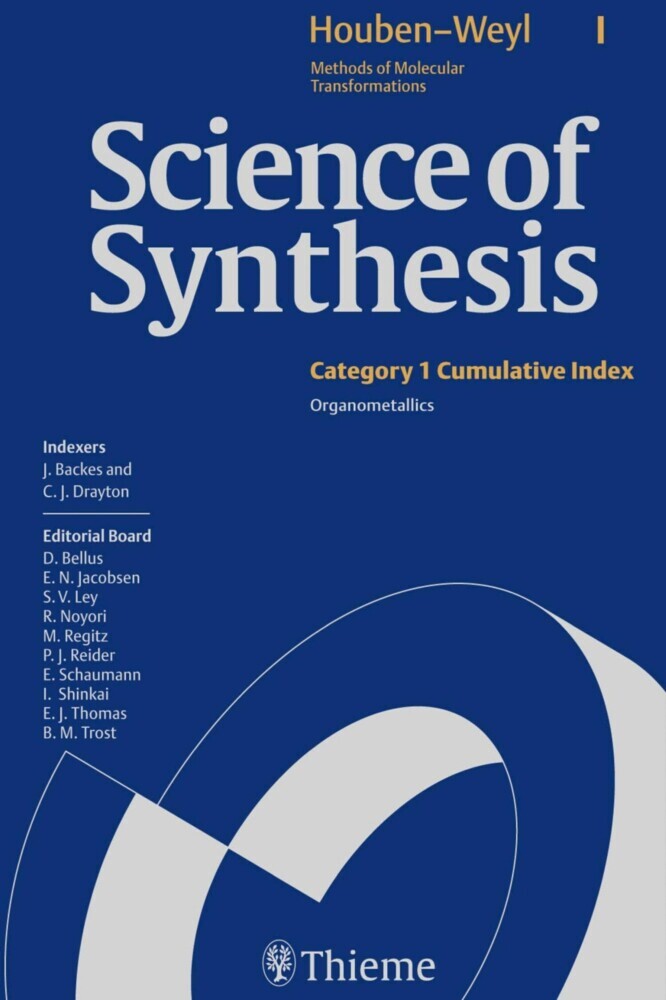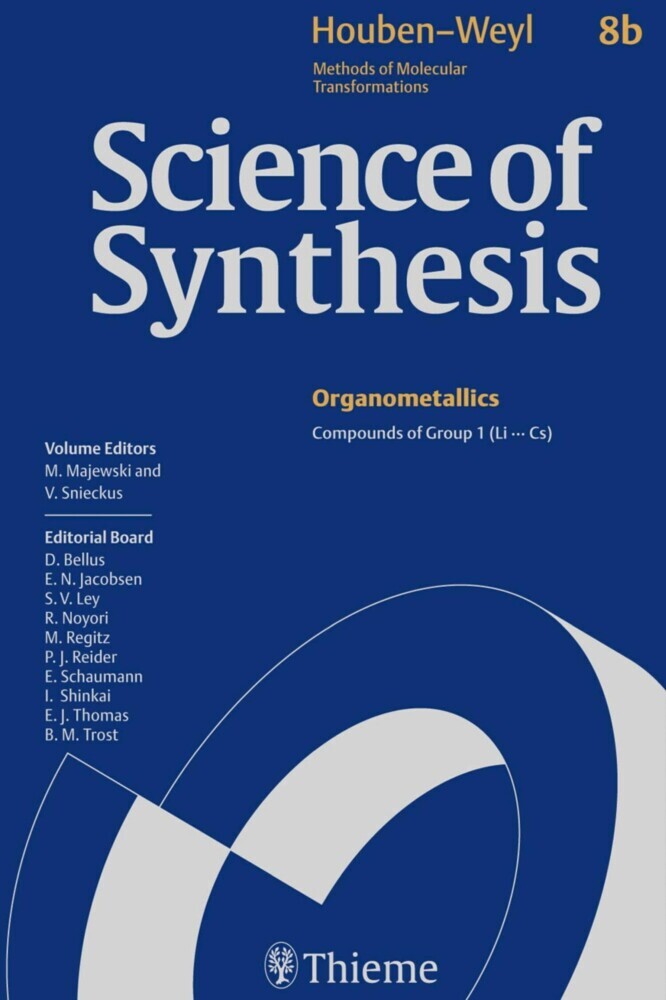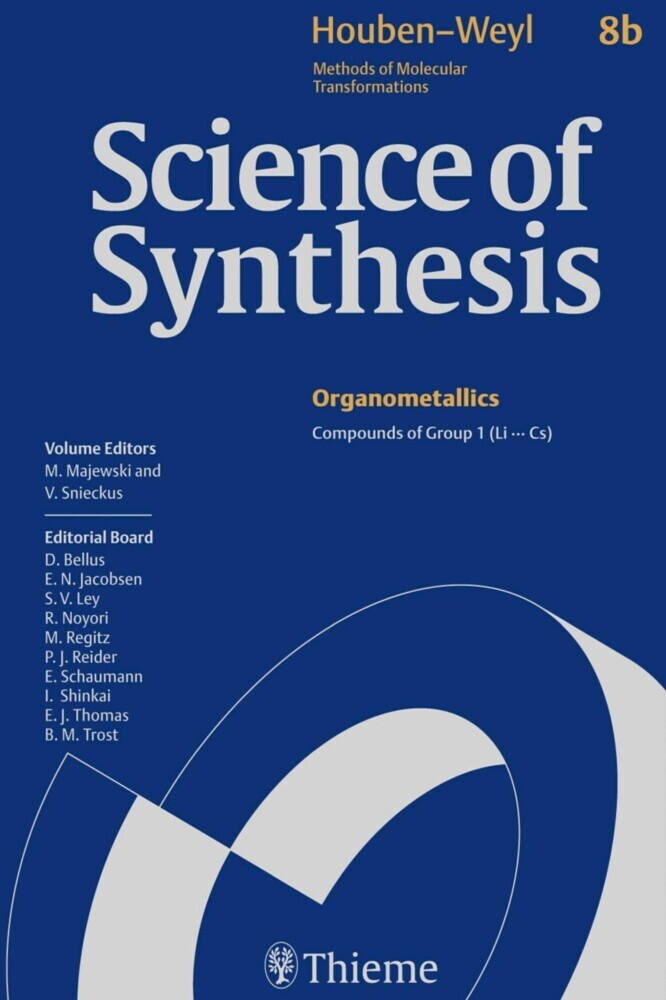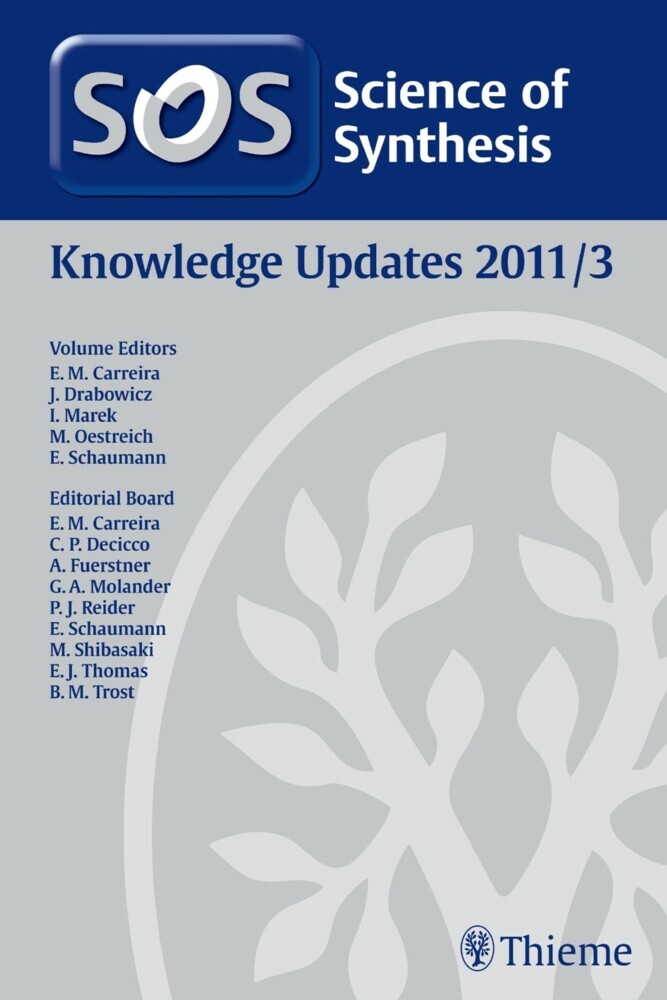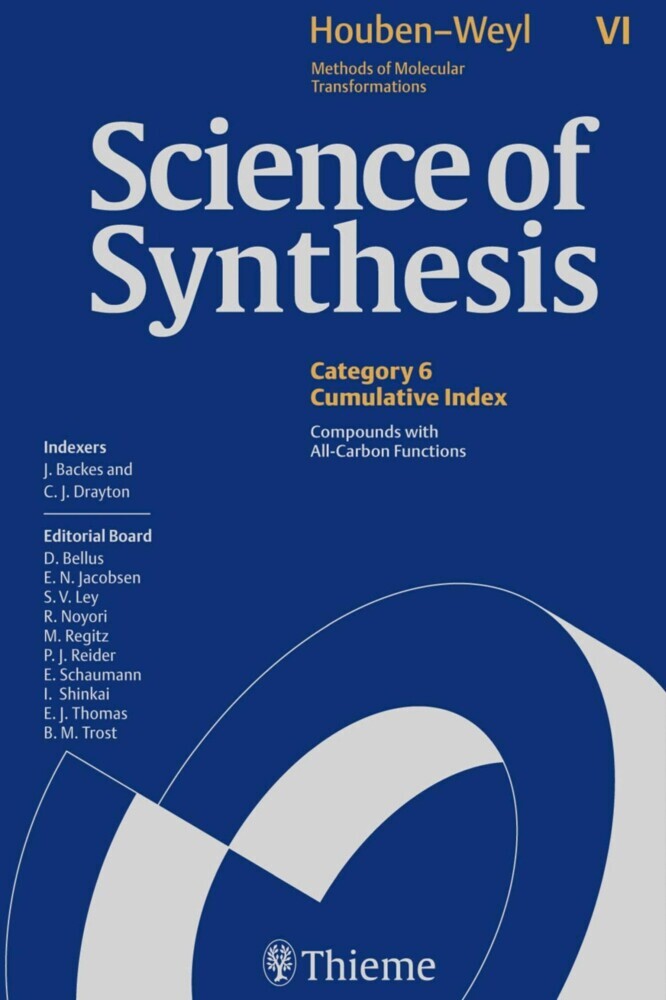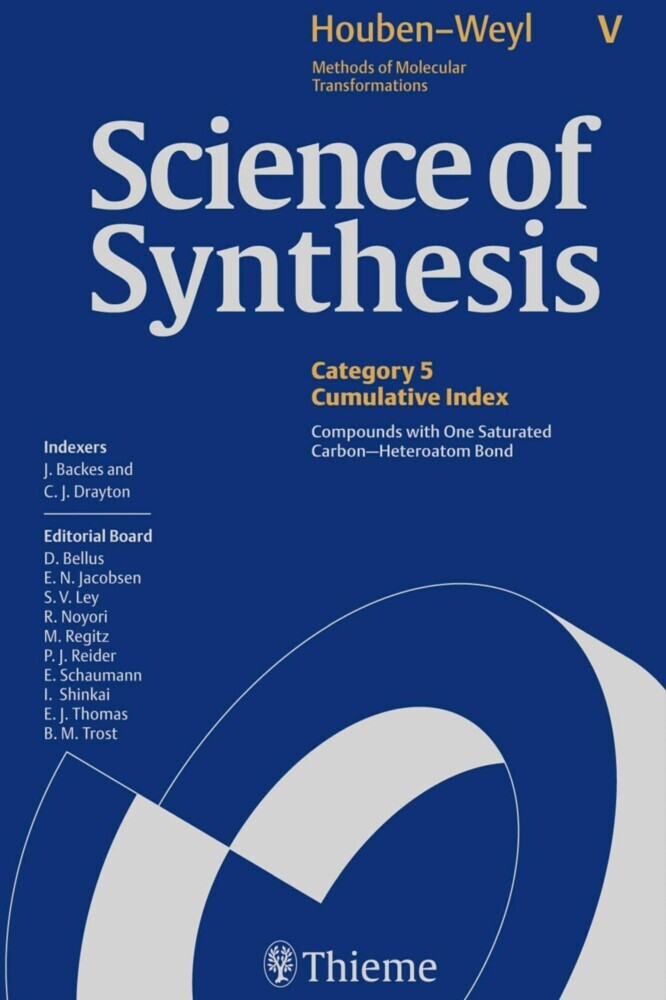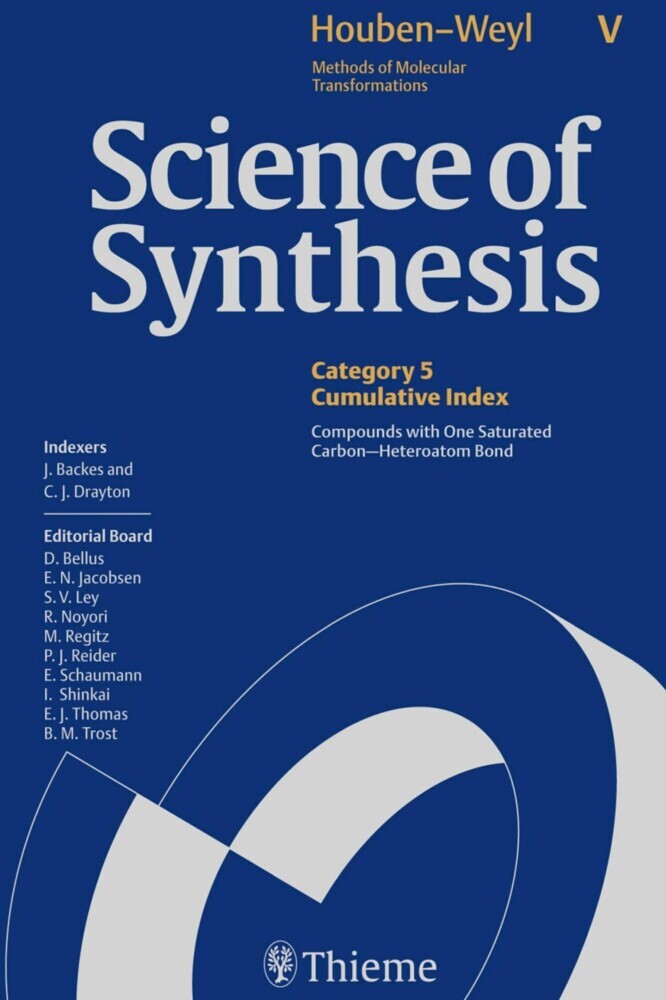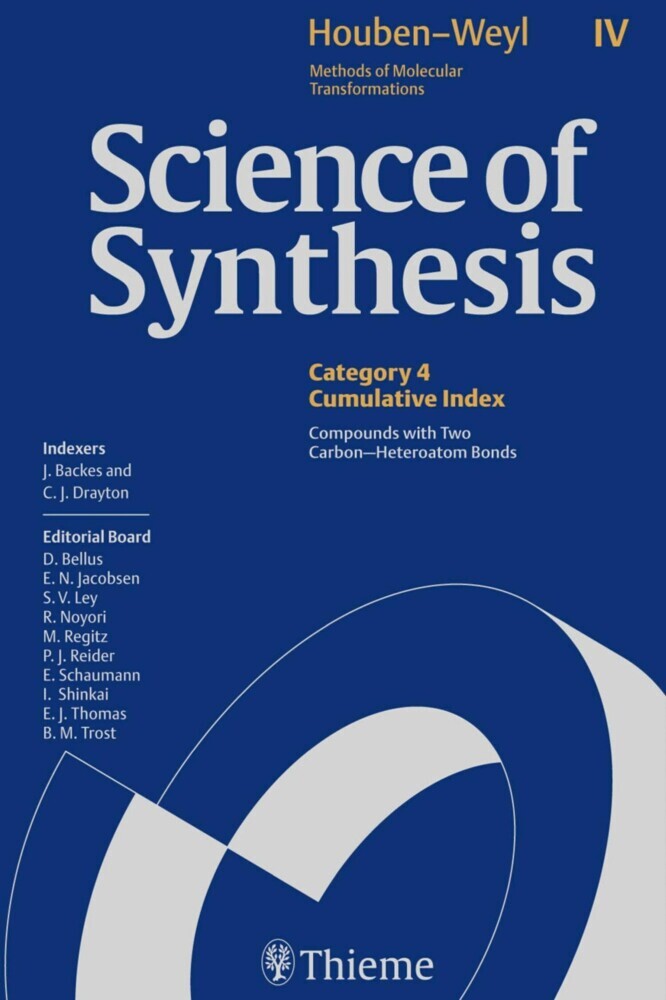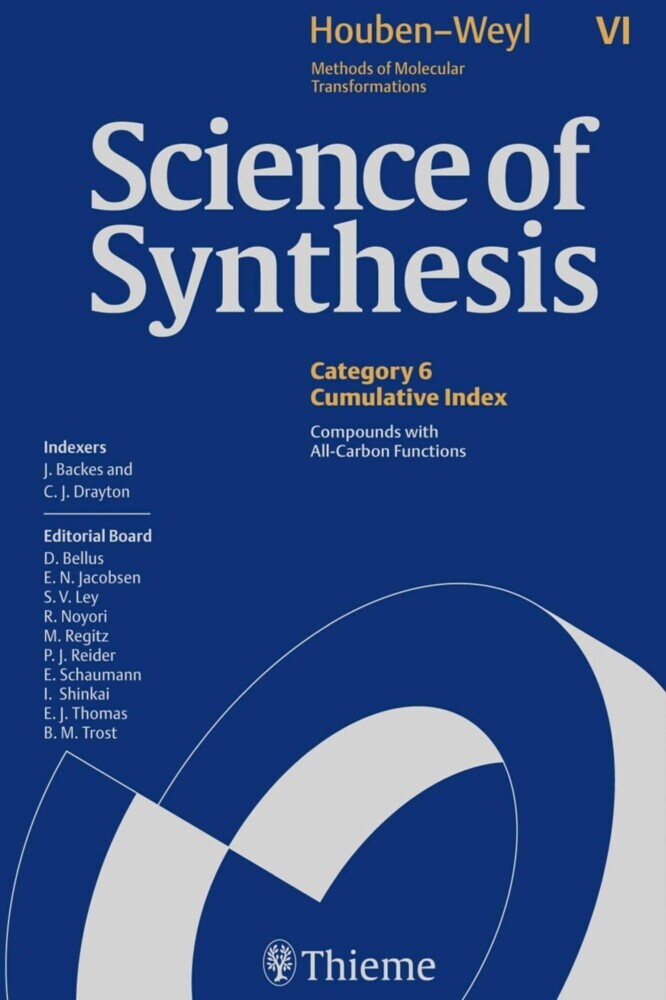Science of Synthesis Knowledge Updates 2012 Vol. 1
The Science of Synthesis Editorial Board,together with the volume editors and authors, is constantly reviewing the whole field of synthetic organic chemistry as presented in Science of Synthesis and evaluating significant developments in synthetic methodology. Four annual volumes updating content across all categories ensure that youalways have access to state-of-the-art synthetic methodology.
Content of this volume: Organometallic Complexes of Titanium, Silicon Compounds, Disilenes, Lithium Compounds, 1,4-Dioxins and Benzo- and Dibenzo-Fused Derivatives, 1,2-Dithiins, Seven-Membered Hetarenes with One Heteroatom, Oxepins, Benzoxepins, Azepines, Cyclopentazepines, and Phosphorus Analogues, Three Carbon-Heteroatom Bonds: Nitriles, Isocyanides, and Derivatives, Heteroatom Analogues of Aldehydes and Ketones.
1;Science of Synthesis: Knowledge Updates 2012/1;1 1.1;Title page;5 1.2;Imprint;7 1.3;Preface;8 1.4;Abstracts;10 1.5;Overview;18 1.6;Table of Contents;20 1.7;Volume 2: Compounds of Groups 7-3 (Mn···, Cr···, V···, Ti···, Sc···, La···, Ac···);38 1.7.1;2.10 Product Class 10: Organometallic Complexes of Titanium;38 1.7.1.1;2.10.19 Organometallic Complexes of Titanium (Update 1);38 1.7.1.1.1;2.10.19.1 Titanium-Mediated Synthesis of Cyclopropyl Derivatives;38 1.7.1.1.1.1;2.10.19.1.1 Synthesis of Cyclopropanes without Heteroatom Substitution;39 1.7.1.1.1.1.1;2.10.19.1.1.1 Method 1: Synthesis from Thioacetals and Thioethers;39 1.7.1.1.1.1.2;2.10.19.1.1.2 Method 2: Synthesis from 1,1-Dihalides;44 1.7.1.1.1.2;2.10.19.1.2 Synthesis of Cyclopropanols;45 1.7.1.1.1.2.1;2.10.19.1.2.1 Synthesis from Carboxylic Acid Esters;45 1.7.1.1.1.2.1.1;2.10.19.1.2.1.1 Method 1: Use of Grignard Reagents without Ligand Exchange;45 1.7.1.1.1.2.1.2;2.10.19.1.2.1.2 Method 2: Use of Alkenes and Grignard Reagents;50 1.7.1.1.1.2.1.2.1;2.10.19.1.2.1.2.1 Variation 1: Bicyclo[n.1.0]alkan-1-ols from Unsaturated Carboxylic Acid Esters;50 1.7.1.1.1.2.1.2.2;2.10.19.1.2.1.2.2 Variation 2: 2-(Hydroxyalkyl)cyclopropanols from Unsaturated Carboxylic Acid Esters;53 1.7.1.1.1.2.1.2.3;2.10.19.1.2.1.2.3 Variation 3: Cyclopropanols from Carboxylic Acid Esters and Alkenes;54 1.7.1.1.1.2.2;2.10.19.1.2.2 Synthesis from Lactones and Other Acid Derivatives;57 1.7.1.1.1.2.2.1;2.10.19.1.2.2.1 Method 1: Synthesis from Lactones;57 1.7.1.1.1.2.2.2;2.10.19.1.2.2.2 Method 2: Synthesis from Other Acid Derivatives;58 1.7.1.1.1.3;2.10.19.1.3 Synthesis of Cyclopropanone Hemiacetals;59 1.7.1.1.1.3.1;2.10.19.1.3.1 Method 1: Synthesis from Cyclic Carbonates;59 1.7.1.1.1.4;2.10.19.1.4 Synthesis of Cyclopropylamines;60 1.7.1.1.1.4.1;2.10.19.1.4.1 Synthesis from Tertiary Amides;60 1.7.1.1.1.4.1.1;2.10.19.1.4.1.1 Method 1: Use of Grignard Reagents without Ligand Exchange;61 1.7.1.1.1.4.1.2;2.10.19.1.4.1.2 Method 2: Use of Organozinc Reagents without Ligand Exchange;65 1.7.1.1.1.4.1.3;2.10.19.1.4.1.3 Method 3: Use of Alkenes and Grignard Reagents;65 1.7.1.1.1.4.1.3.1;2.10.19.1.4.1.3.1 Variation 1: Bicyclo[n.1.0]alkan-1-amine Derivatives from Unsaturated Carboxylic Amides;66 1.7.1.1.1.4.1.3.2;2.10.19.1.4.1.3.2 Variation 2: 2-Azabicyclo[n.1.0]alkane Derivatives from Unsaturated Carboxylic Amides;68 1.7.1.1.1.4.1.3.3;2.10.19.1.4.1.3.3 Variation 3: Cyclopropylamines from Tertiary Amides and Alkenes;69 1.7.1.1.1.4.2;2.10.19.1.4.2 Synthesis from Nitriles;72 1.7.1.1.1.4.2.1;2.10.19.1.4.2.1 Method 1: Use of Grignard Reagents without Ligand Exchange;72 1.7.1.1.1.4.2.1.1;2.10.19.1.4.2.1.1 Variation 1: Alkylcyclopropylamines from Aliphatic Nitriles;72 1.7.1.1.1.4.2.1.2;2.10.19.1.4.2.1.2 Variation 2: 1-Aryl- and 1-Alkenylcyclopropylamines from Unsaturated Nitriles;78 1.7.1.1.1.4.2.2;2.10.19.1.4.2.2 Method 2: Use of Alkenes and Grignard Reagents;80 1.7.1.1.1.4.2.2.1;2.10.19.1.4.2.2.1 Variation 1: Bicyclic Cyclopropylamines from Unsaturated Nitriles;80 1.7.1.1.1.4.2.2.2;2.10.19.1.4.2.2.2 Variation 2: Cyclopropylamines from Nitriles and Alkenes;81 1.7.1.1.1.4.3;2.10.19.1.4.3 Synthesis from Imides;82 1.7.1.1.1.4.3.1;2.10.19.1.4.3.1 Method 1: Synthesis from Formimides or Cyclic Imides;82 1.8;Volume 4: Compounds of Group 15 (As, Sb, Bi) and Silicon Compounds;88 1.8.1;4.4 Product Class 4: Silicon Compounds;88 1.8.1.1;4.4.1 Product Subclass 1: Disilenes;88 1.8.1.1.1;Synthesis of Product Subclass 1;90 1.8.1.1.1.1;4.4.1.1 Method 1: Synthesis of Acyclic Disilenes;90 1.8.1.1.1.1.1;4.4.1.1.1 Variation 1: Photolysis of Linear Trisilanes;90 1.8.1.1.1.1.2;4.4.1.1.2 Variation 2: Photolysis of Cyclotrisilanes;91 1.8.1.1.1.1.3;4.4.1.1.3 Variation 3: Reductive Dehalogenation of 1,1-Dihalosilanes;91 1.8.1.1.1.1.4;4.4.1.1.4 Variation 4: Reductive Dehalogenation of 1,2-Dihalodisilanes;94 1.8.1.1.1.1.5;4.4.1.1.5 Variation 5: Coupling of a 1,1-Dilithiosilane with Dihalosilanes;94 1.8.1.1.1.1.6;4
| ISBN | 9783131787910 |
|---|---|
| Artikelnummer | 9783131787910 |
| Medientyp | E-Book - PDF |
| Copyrightjahr | 2014 |
| Verlag | Georg Thieme Verlag KG |
| Umfang | 567 Seiten |
| Sprache | Englisch |
| Kopierschutz | Digitales Wasserzeichen |

